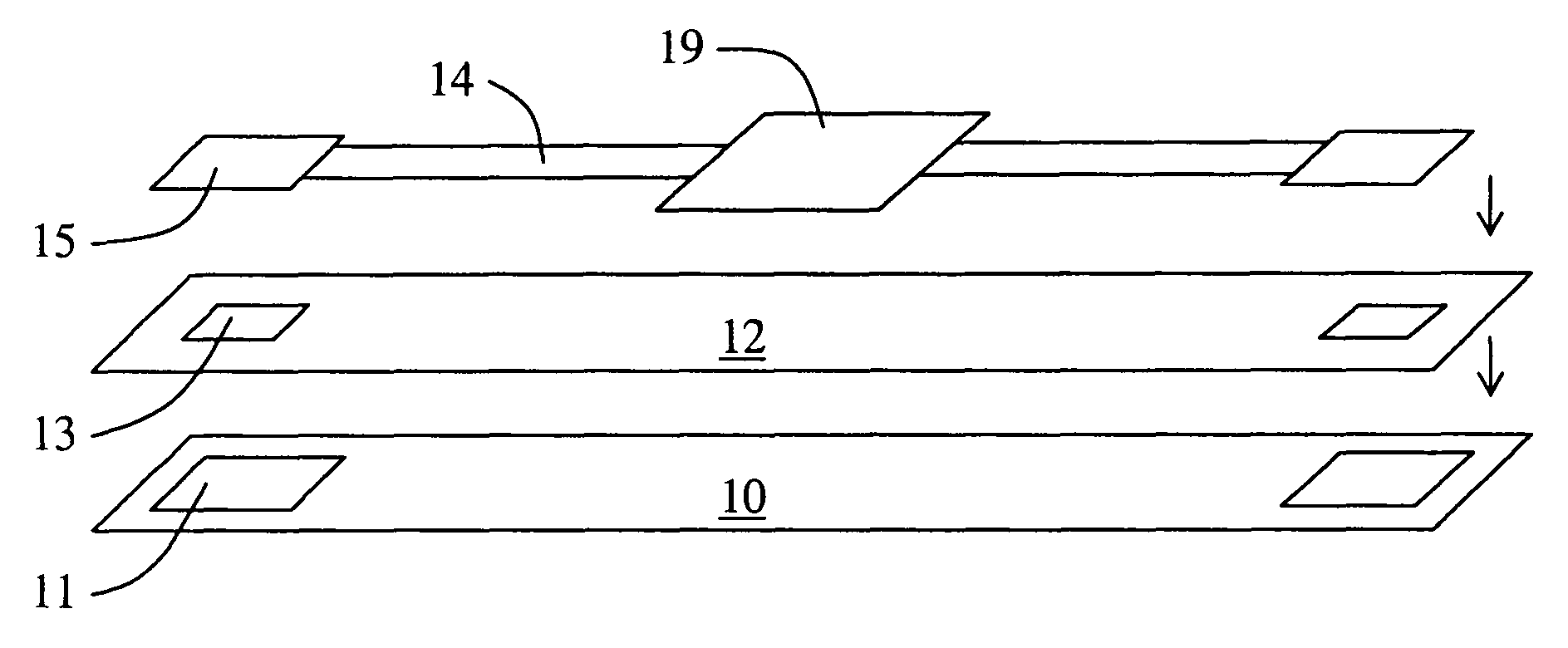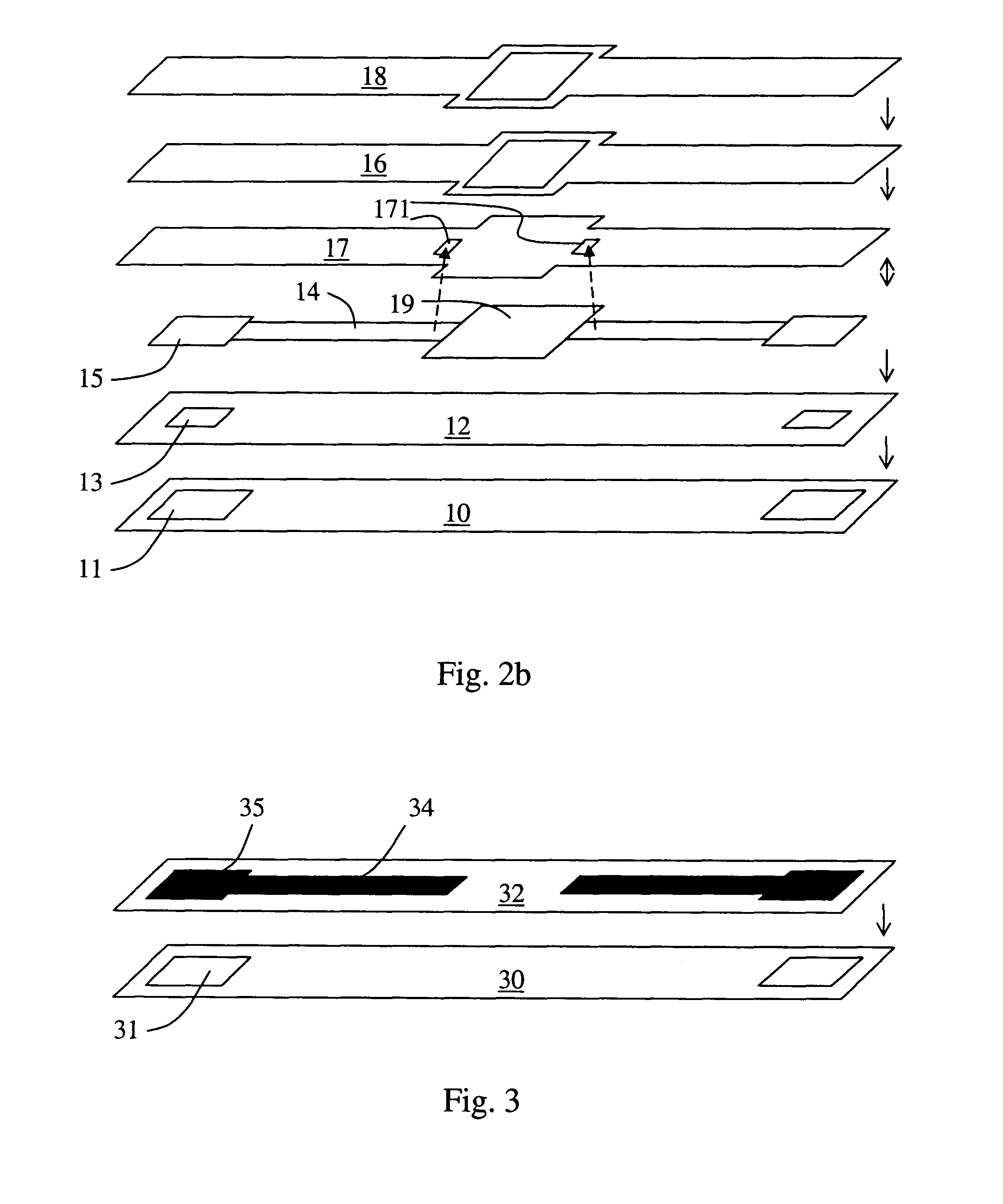Sensor arrangement
a technology of sensors and insulating pads, applied in the field of sensor devices, can solve the problems of reduced breathability of these locations, loose electrical conductors on the surface of fabric, and discomfort of skin, and achieve the effect of convenient manufacturing
- Summary
- Abstract
- Description
- Claims
- Application Information
AI Technical Summary
Benefits of technology
Problems solved by technology
Method used
Image
Examples
Embodiment Construction
[0026]In FIG. 1, the substrate is marked with the reference number 10. An opening 11 is made in it for an electrode contact. A moisture-insulating intermediate layer 12 is attached permanently on top of the substrate. An opening 13, which can essentially coincide with the opening 11 can also be made in the intermediate layer. The openings 11 and 13 can, of course, also be made later in a single work stage. The electrode 15 is positioned relative to the opening 11 in the substrate and to the opening 13 in the intermediate layer, so that there is a contact connection to its signalling surface from the outer surface of the substrate 10 (from the skin). The signal transmission conductor 14 is attached on top of the intermediate layer 12. Thus the signal transmission conductor 14 is attached to the substrate 10 with the aid of the electrically insulating and watertight layer 12, which is located between the strip-like signal transmission conductor 14 and the substrate 10. At one end, the...
PUM
| Property | Measurement | Unit |
|---|---|---|
| elongations | aaaaa | aaaaa |
| elongations | aaaaa | aaaaa |
| flexible | aaaaa | aaaaa |
Abstract
Description
Claims
Application Information
 Login to View More
Login to View More - R&D
- Intellectual Property
- Life Sciences
- Materials
- Tech Scout
- Unparalleled Data Quality
- Higher Quality Content
- 60% Fewer Hallucinations
Browse by: Latest US Patents, China's latest patents, Technical Efficacy Thesaurus, Application Domain, Technology Topic, Popular Technical Reports.
© 2025 PatSnap. All rights reserved.Legal|Privacy policy|Modern Slavery Act Transparency Statement|Sitemap|About US| Contact US: help@patsnap.com



